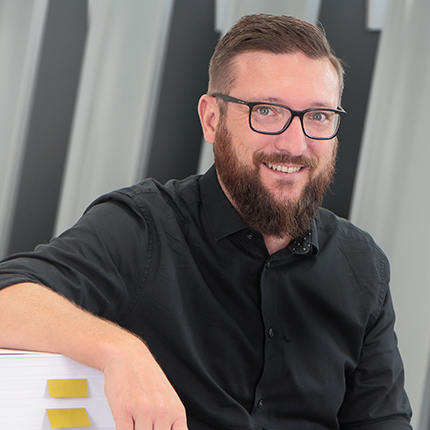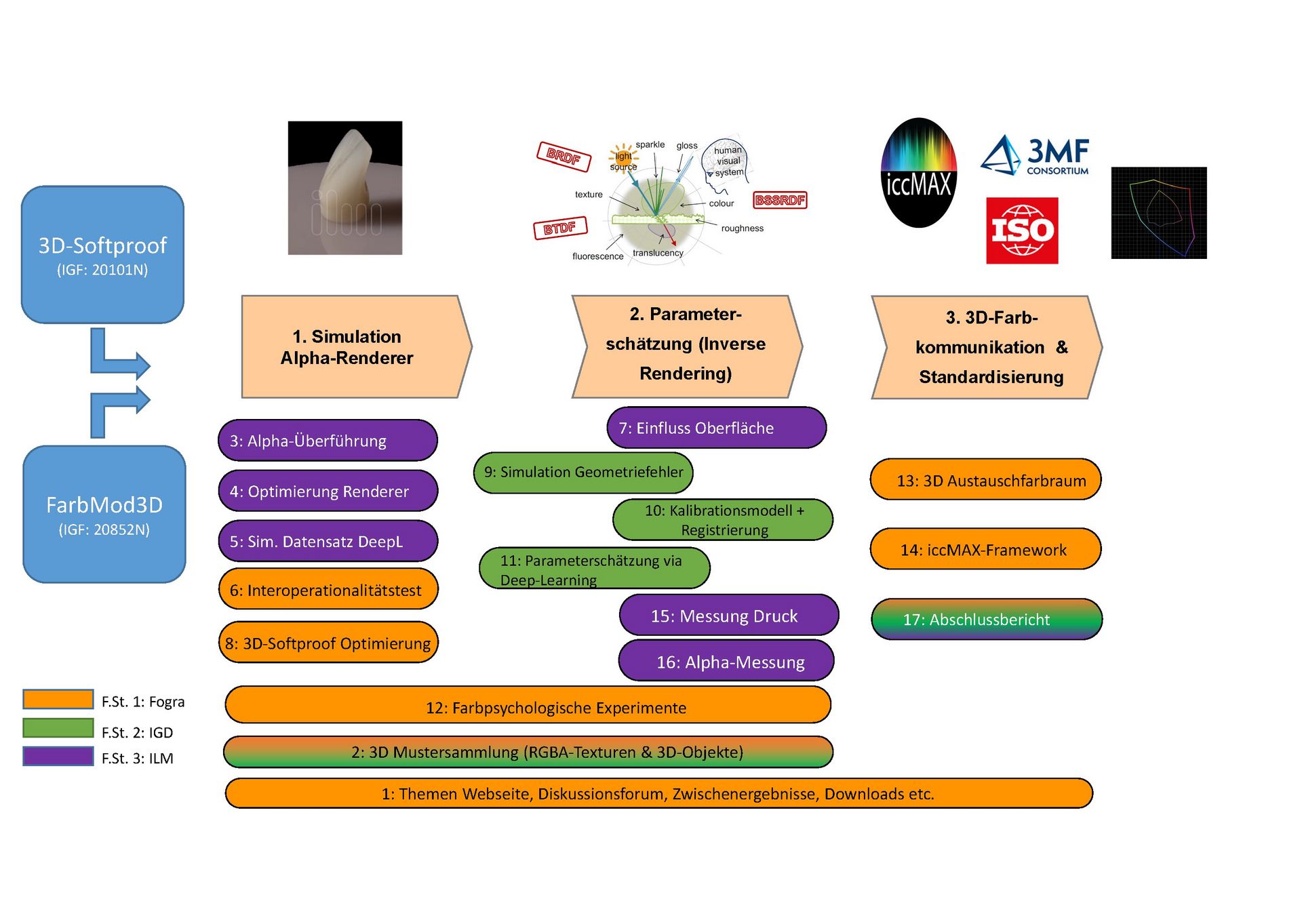Topic of your interest
3D Softproof for an accurate simulation of volumetric light transport effects ...
... and geometric errors in 3D prints
Short name: 3D-FarbSim
Fogra no. 13.007
Project leader: Andreas Kraushaar
Partner: P. Urban (IGD Darmstadt), A. Kienle (ILM)
Funding: BMWK (IGF) via DLR
Timescale: 01.08.2022 - 31.07.2024
With the goal of improving the design and product development process of graphic 3D printing objects, this follow-on project (from FarbMod 3D) will develop and validate two renderers that build on each other. This will be done with respect to the physical and perceptually accurate simulation of the visual appearance. These are, on the one hand, a device-independent renderer for the simulation of the "target design" and, on the other hand, a device-specific renderer for the simulation of the final 3D print, both of which take physically accurate account of volume light scattering even for optically thin materials.
This is based on the hypothesis that the deep-learning approaches used to estimate the optical parameters required for physically precise rendering will allow volumetric rendering that is sufficiently fast for decision-making and quality control on current computer hardware. The high quality of the intrinsic and phenomenological characterizations and models developed in the previous project required elaborate laboratory setups. It is hypothesized that modern methods of deep-learning based inverse rendering will enable a comparable quality with much simpler and lower characterization effort.
Solution steps
The goal of this project is to enable 3D visualization tool providers to offer solutions for both quality control and decision-making that lead to avoiding high costs, reducing environmental impact, and promoting customer satisfaction. To achieve this goal, key technical challenges will be overcome in three main areas:
- Simulation (correct translucency representation already in the design process)
- Parameterization (simplification of material characterization)
- 3D color communication (development of a 3D printing exchange color space).
In point 1. Simulation, the renderer developed by the ILM in the previous project FarbMod 3D is supplemented by a correct simulation of translucency.
The essence of the second point is the simplification of the optical material characterizations developed in the predecessor project.
The third focus includes two main goals. On the one hand, a 3D printing exchange color space is to be developed, which will significantly improve 3D product development. Secondly, the developed methods are to be actively communicated to the industry.
Targeted Results
The goal of this research project is to develop and validate two renderers that build on each other. One of the two is to produce a device-independent rendering that corresponds to the "target design". The second renderer, on the other hand, produces a device-dependent rendering of the final 3D print.
Publications & intermediate findings
| Title | Version | Date | File type | Download |
|---|---|---|---|---|
| Presentation DfwG 2023 (Fogra & ILM, German) | 06.10.2023 | Download | ||
| Presentation DfwG 2023 (Fraunhofer IGD, English) | 06.10.2023 | Download |
Meeting documents
| Title | Description/abstract | Version | Date | File type | Download |
|---|---|---|---|---|---|
| Slides PA meeting 07.03.2023 | Presentation of the project status as part of the TB Digital Printing on 07.03.2023 | 07.03.2023 | Download | ||
| Slides PA meeting 14.03.2023 | Presentation of the project status as part of the TB Prepress on 14.03.2023 | 14.03.2023 | Download | ||
| Slides PA meeting 23.02.2024 | Presentation of the project status as part of the TB Digital Printing on 23.02.2024 | 22.04.2024 | Download | ||
| Slides PA meeting 12.03.2024 | Presentation of the project status as part of the TB Prepress on 12.03.2024 | 22.04.2024 | Download | ||
| Slides PA meeting 25.04.2024 | Presentation of the project status as part of the TB Materials & Environment on 25.04.2024 | 08.05.2024 | Download | ||
| Agenda PA meeting 07.05.2024 | Agenda of the workshop on 3D printing and translucent materials co-organized with GDR Appamat online on 07.05.2024 | 03.05.2024 | Download | ||
| Recording of PA meeting from 07.05.2024 | Video of workshop on 3D printing and translucent materials from 07.05.2024 | 14.05.2024 | youtube | Download | |
| Slides of PA meeting from 07.05.2024 | Presentations of the workshop on 3D printing and translucent materials from 07.05.2024 | 14.05.2024 | Download |



